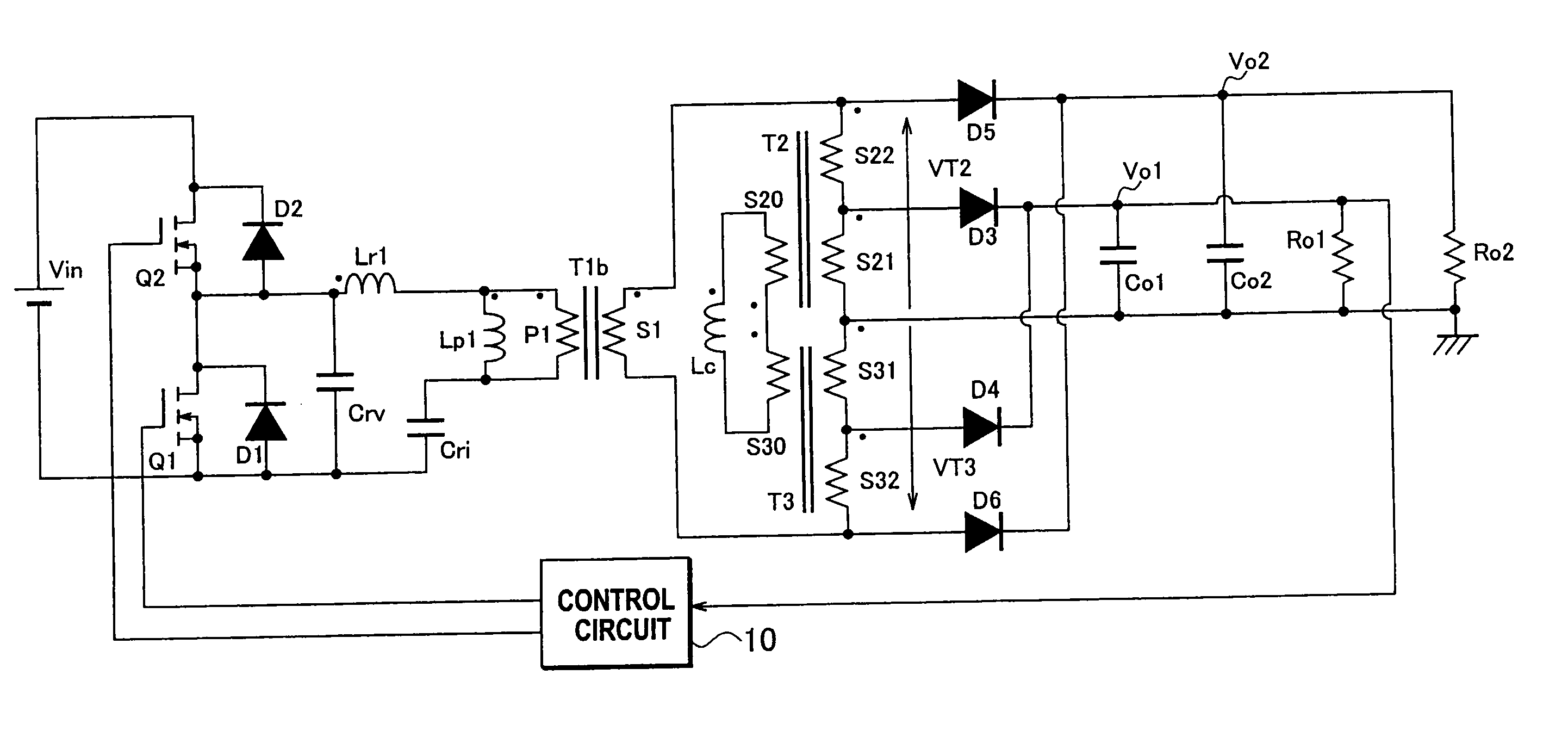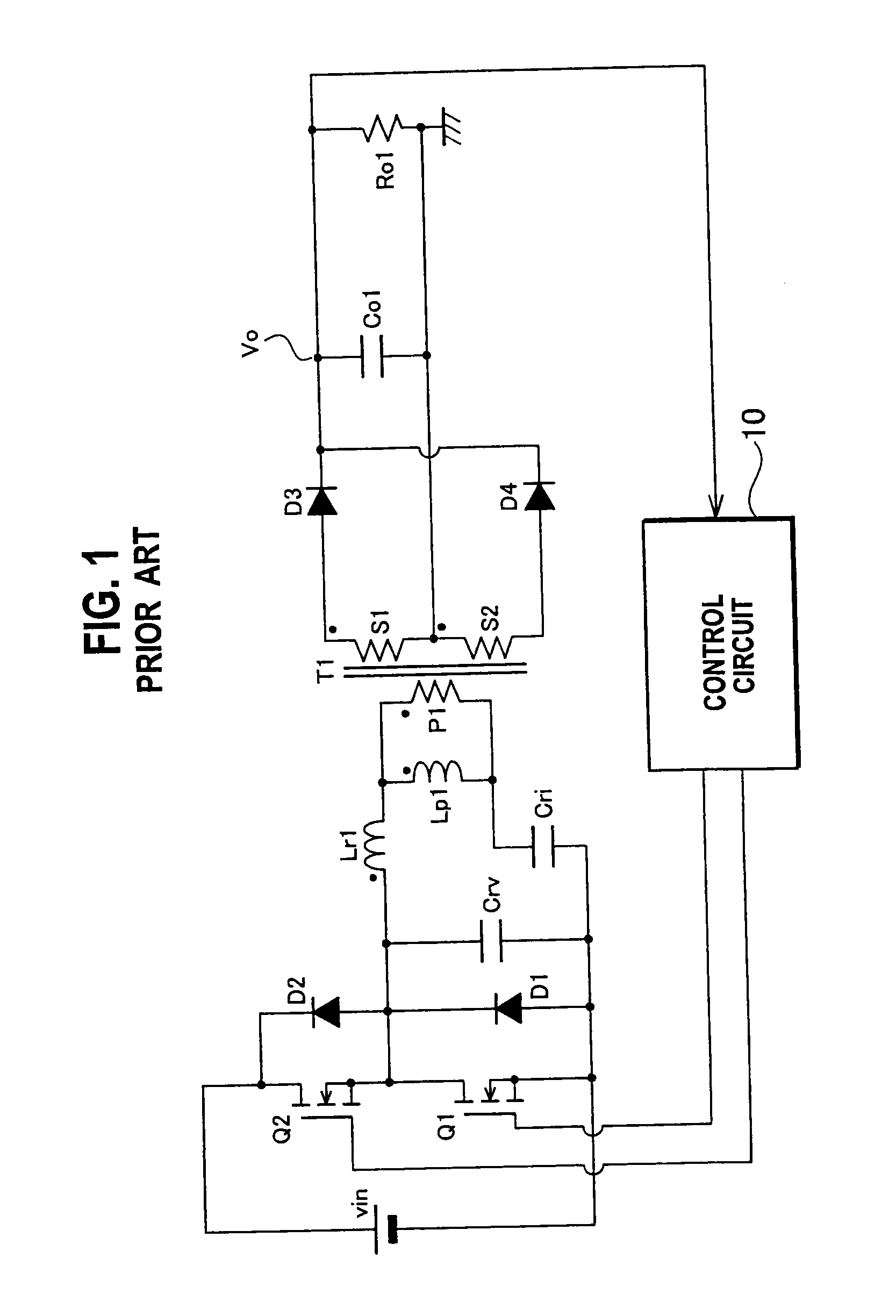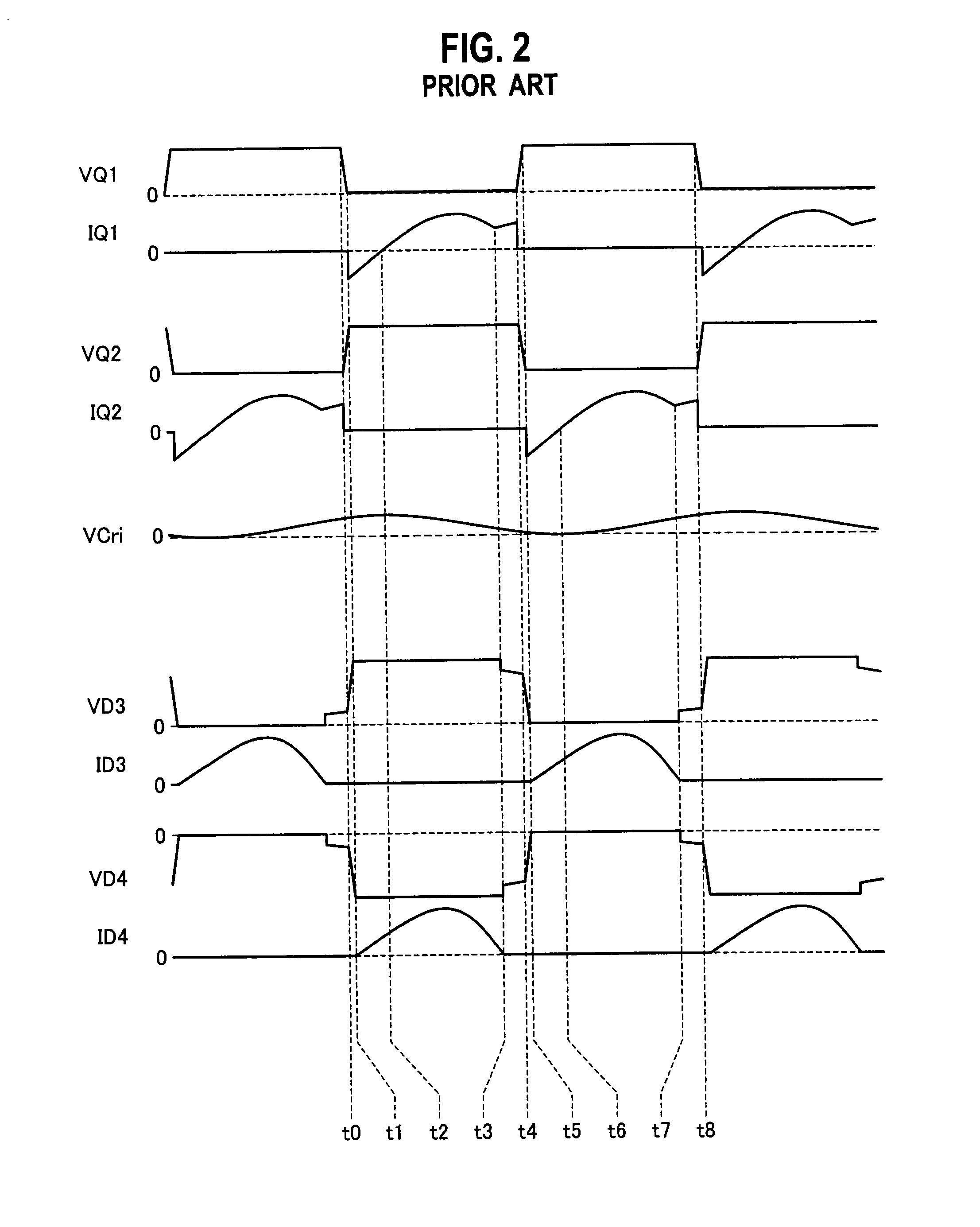Dc-dc converter
- Summary
- Abstract
- Description
- Claims
- Application Information
AI Technical Summary
Benefits of technology
Problems solved by technology
Method used
Image
Examples
embodiment 1
[0053]FIG. 4 is a block diagram of a circuit of a DC-DC converter according to embodiment 1 of the present invention. Like the DC-DC converter shown in FIG. 1, the DC-DC converter shown in FIG. 4 is configured by use of a half-bridge circuit.
[0054]A transformer (a first transformer) T1b includes a primary winding P1 and a secondary winding S1. Another transformer (a second transformer) T2 includes a coupled winding (a primary winding) S20 and transformer windings (secondary windings) S21 and S22, the three windings being tightly coupled with one another. Yet another transformer (a third transformer) T3 includes a coupled winding (a primary winding) S30 and transformer windings (secondary windings) S31 and S32, the three windings being tightly coupled with one another.
[0055]The turns ratio between the number n20 of turns of the coupled winding S20 and the number n30 of turns of the coupled winding S30 is 1:1. The turns ratio between the number n21 of turns of the transformer winding ...
embodiment 2
[0101]FIGS. 6A to 6C are diagrams respectively showing winding structures of a transformer in the DC-DC converter according to embodiment 2 of the present invention. In the case of embodiment 2, the DC-DC converter can be configured with a transformer which is obtained by integrating the second transformer T2, the third transformer T3, and the reactor Lc shown in FIG. 4, and which has any one of the structures shown in FIGS. 6A to 6C. Descriptions will be provided hereinbelow for the transformer thus obtained by the integration.
[0102]The transformer shown in FIG. 6A includes a core 30 which has two side legs 30a and 30b as well as a center leg 30c, and which is shaped like a mirror E-shape. The tightly coupled transformer windings S21 and S22 as well as the tightly coupled transformer windings S31 and S32 are wound around the center leg 30c with the tightly coupled transformer windings S21 and S22 being separated from the tightly coupled transformer windings S31 and S32 at a predete...
embodiment 3
[0109]FIG. 9 is a circuit diagram of a DC-DC converter according to embodiment 3 of the present invention. The DC-DC converter shown in FIG. 9 is characterized in that the DC-DC converter is configured by use of a full-bridge circuit. Specifically, the DC-DC converter according to embodiment is provided with the switching elements Q3 and Q4 in addition to the switching elements Q1 and Q2 included in the half-bridge circuit shown in FIG. 4. The both ends of the DC power supply Vin are connected in series to the switching element Q3 and the switching element Q4 in the circuit.
[0110]One end of the voltage resonance capacitor Crv is connected to the connecting point between the switching element Q1 and the switching element Q2, whereas the other end of the voltage resonance capacitor Crv is connected to the connecting point between the switching element Q3 and the switching element Q4.
[0111]A control circuit 10a turns on and off a set of the switching element Q1 and the switching elemen...
PUM
 Login to View More
Login to View More Abstract
Description
Claims
Application Information
 Login to View More
Login to View More - R&D
- Intellectual Property
- Life Sciences
- Materials
- Tech Scout
- Unparalleled Data Quality
- Higher Quality Content
- 60% Fewer Hallucinations
Browse by: Latest US Patents, China's latest patents, Technical Efficacy Thesaurus, Application Domain, Technology Topic, Popular Technical Reports.
© 2025 PatSnap. All rights reserved.Legal|Privacy policy|Modern Slavery Act Transparency Statement|Sitemap|About US| Contact US: help@patsnap.com



